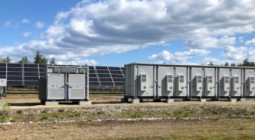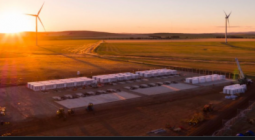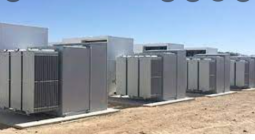Here’s how to solve the UK energy crisis for the long term – store more power
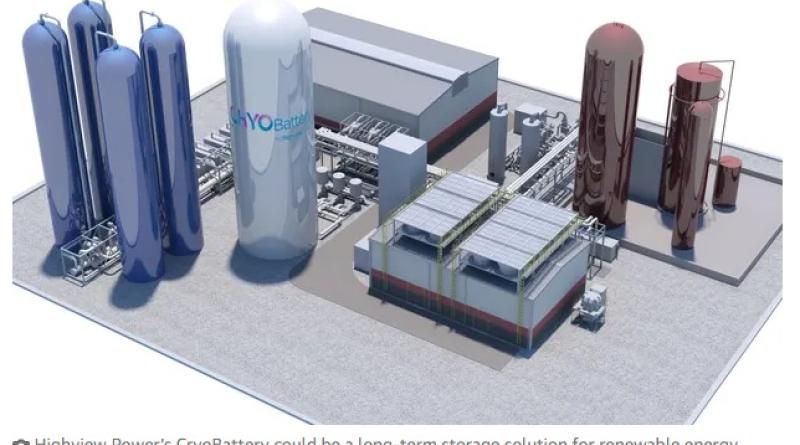
Four storage solutions to help Britain keep the lights on deep into the future
Soaring energy bills rooted in a global gas supply crunch have focused minds on the age-old problem: how can we better store power?
Attention has turned to the closure of the Rough gas storage facility in the North Sea in 2017, which left the UK with only enough storage to meet the demand of four to five winter days.
But while gas is being phased out, Britain’s growing reliance on renewables, such as offshore wind and solar, does not solve the problem of intermittency – what happens when the wind does not blow or the sun does not shine.
The key to securing enough affordable, low-carbon energy is more storage to make the most of the renewable energy available. A storage boom has been forecast over the coming decade as governments race to meet their climate targets.
Within the next five years, the International Energy Agency (IEA) expects global energy storage capacity to expand by 56% to reach more than 270 GW by 2026, driven by a growing need to create flexible electricity systems which rely more on renewable sources.
Well-established lithium-ion batteries are expected to dominate, according to a report by Bloomberg New Energy Finance, but their capacity is measured in hours rather than days. New energy technologies, which can store energy for longer periods, have found renewed favour within the power industry as the winter energy crisis has unfolded.
Here are four long-range energy storage options which could help to keep the lights on in the future:
‘Gravity’ storage
Hydropower has acted as a form of energy storage in the UK for decades. The principle is simple: electricity is used to pump water upwards into a reservoir when the market has ample power available. When electricity supplies become tight the water can be released at short notice to flow over a generating turbine to create electricity for the grid to use.
A new breed of pumped storage could play an even greater role than the giant hydropower plants of the past. Engineers believe they could unlock hundreds of potential sites across the UK, which would be quicker and cheaper to build than traditional hydropower dams. By using a mineral-rich fluid, which has more than two-and-a-half times the density of water, projects could generate the same amount of electricity from slopes which are less than half as high.
Typically, pumped hydropower is stored within the range of five to 175 hours, compared with the most-used lithium-ion battery technology which can usually store electricity for less than four hours, according to the IEA. One report by the Paris-based agency found that India dominates the expansion of pumped hydropower storage thanks to projects using its existing large reservoirs.
Another form of “mechanical energy storage” which could play a greater role in the future involves harnessing “gravity energy” to create electricity by using electric winches to hoist 12,000-tonne weights to the top of a disused mine shaft when there is plenty of renewable energy available, then dropping the weights hundreds of metres down vertical shafts to generate electricity when needed. These innovative storage projects are unlikely to replace the UK’s need for batteries, but they could help the country meet its climate targets at a lower cost.
Concentrated solar power storage

In the heat of the Nevada desert US engineers have already begun pioneering new technology which stores energy generated by renewables as heat. The Crescent Dunes project uses the heat of a vast solar farm, concentrated using mirrors, to heat molten salt to temperatures of up to 560C. The salt is able to maintain this temperature until electricity is needed. Then, the heat is used to run a conventional steam turbine which generates enough electricity to power 75,000 homes long after the sun has set.
The IEA expects China to lead the expansion of concentrated solar power storage thanks to a generous subsidy scheme, which is poised to continue until the end of this year. Beyond China, the United Arab Emirates is expected to roll out the second-largest volume of new capacity globally. There are also similar projects emerging across Australia.
Concentrated solar power is typically stored for between five to 15 hours, according to the IEA, more than three times the duration of traditional lithium-ion batteries. Unlike batteries, which have a finite number of charge/discharge cycles, the molten salt, or molten silicon, can be used indefinitely and can be recycled when the units reach the end of their 20-year service life.
Green hydrogen
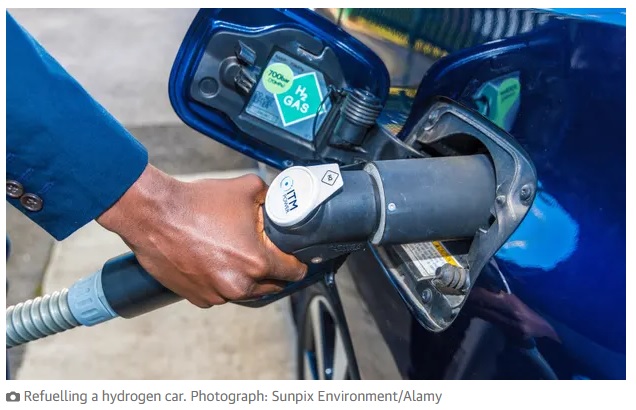
Demand for hydrogen made from water and renewable energy is expected to boom in the decades ahead as governments plan to replace the fossil fuels used in power plants, factories and heavy transport with the clean-burning, green alternative. But green hydrogen can also be used as a form of energy storage.
“When the wind is blowing but the grid is oversupplied with renewable energy you can store energy in a battery for about an hour,” said Dr Graham Cooley, the chief executive of ITM Power, which makes the electrolysers used to produce green hydrogen. “But if you want to store energy for days or even months you need something new.”
In the past, the UK’s electricity system operator has been forced to pay renewable energy developers to switch off their wind turbines or solar farms to avoid overloading the grid with green electricity when power supplies outstrip demand. But using sunny weekends and windy nights to run electrolysers and create green hydrogen could help countries make better use of their wind and solar farms.
Cooley said ITM Power faces growing demand for its electrolysers, which are built at a factory in Sheffield, in part because the cost of producing green hydrogen has come down radically in line with the falling cost of renewable energy. It helps that more energy companies are interested in avoiding the record market price for fossil fuel gas too, he added.
‘Cryogenic’ batteries
Within the coming months one of the world’s biggest liquid air, or “cryogenic”, batteries will begin operating near Manchester in the UK after its developers promised it could help store renewable energy for weeks rather than hours.
The project is being developed by Highview Power. It plans to use renewable electricity to chill air to -196C, transforming it into a liquid that could be stored in large metal tanks for weeks. When needed, the liquid can be turned back into gas, and used to turn a turbine and generate enough electricity to power up to 200,000 homes for five hours.
The full-scale “cryobattery” will have a capacity of 50MW or 250MWh over a five-hour release time, and follows the success of a 5MW pathfinder project built next to a landfill site in Bury, Greater Manchester, in summer 2018.
Highview has plans to build its long-duration batteries in the US and Chile, and earlier this year set out plans to develop seven new liquid-air projects in Spain at a cost of about $1bn (£735m). Its UK project will be the first.


